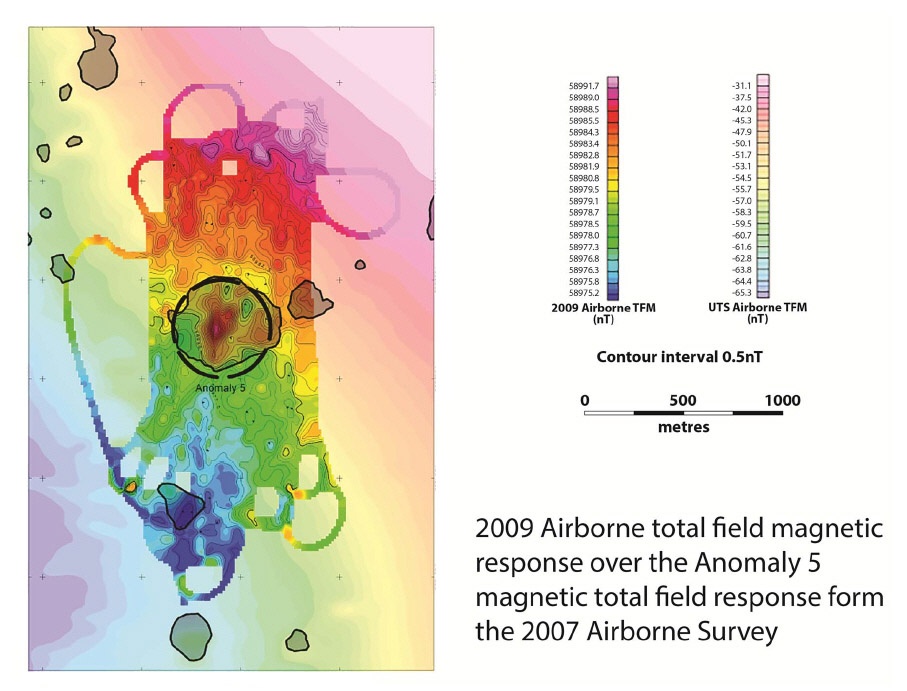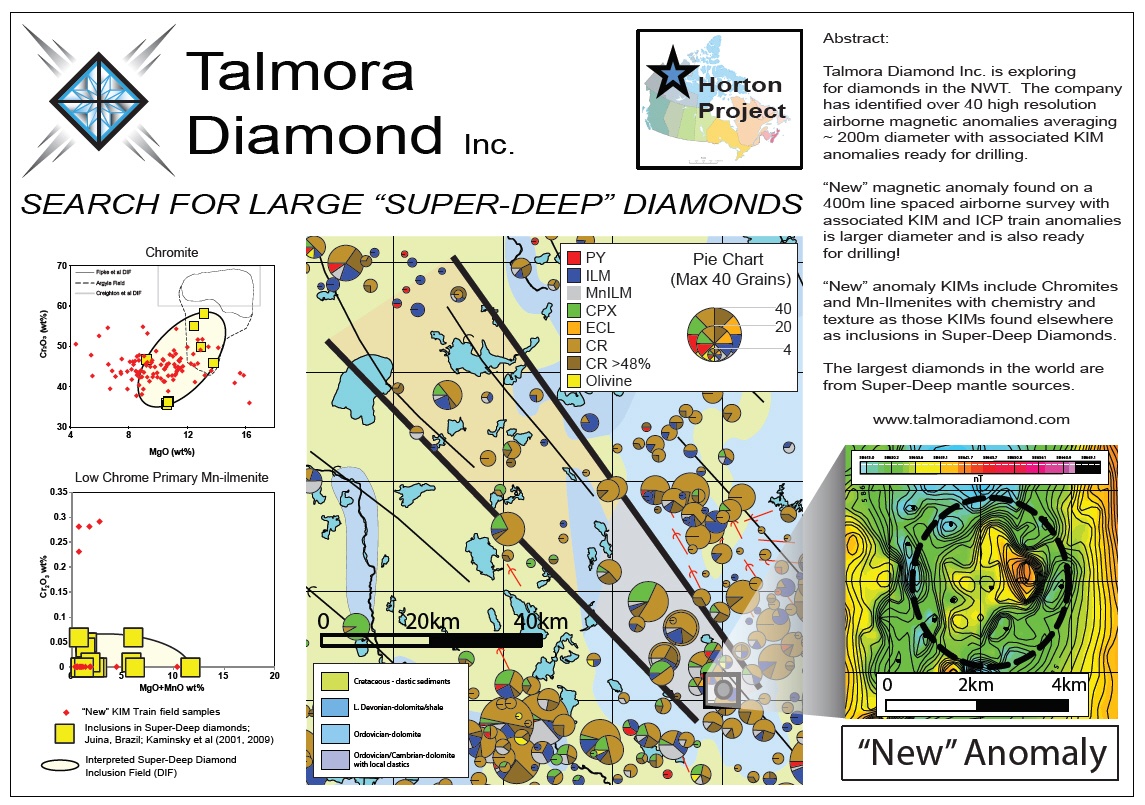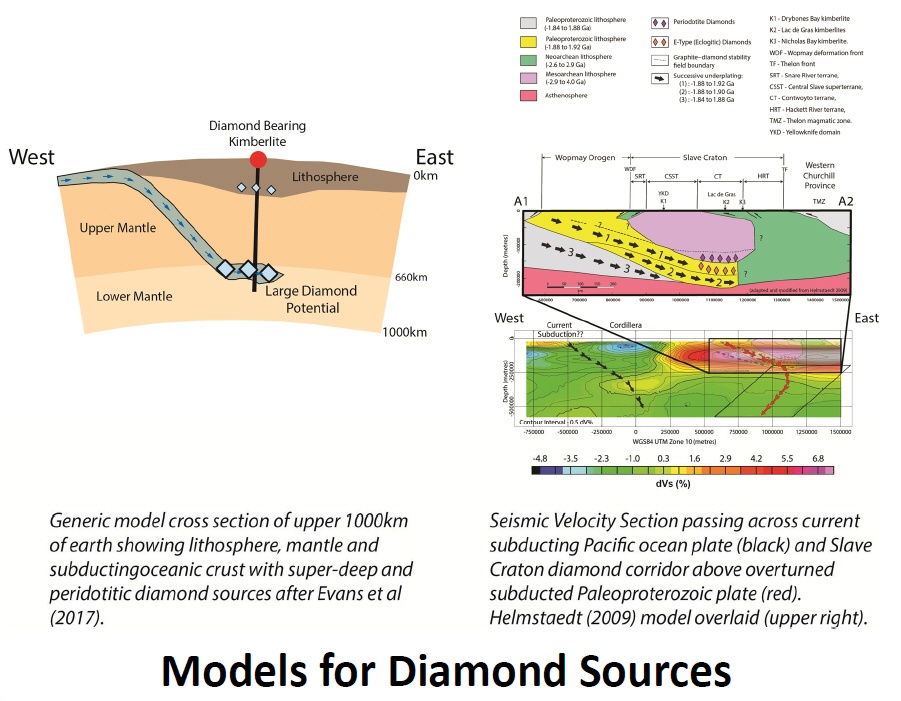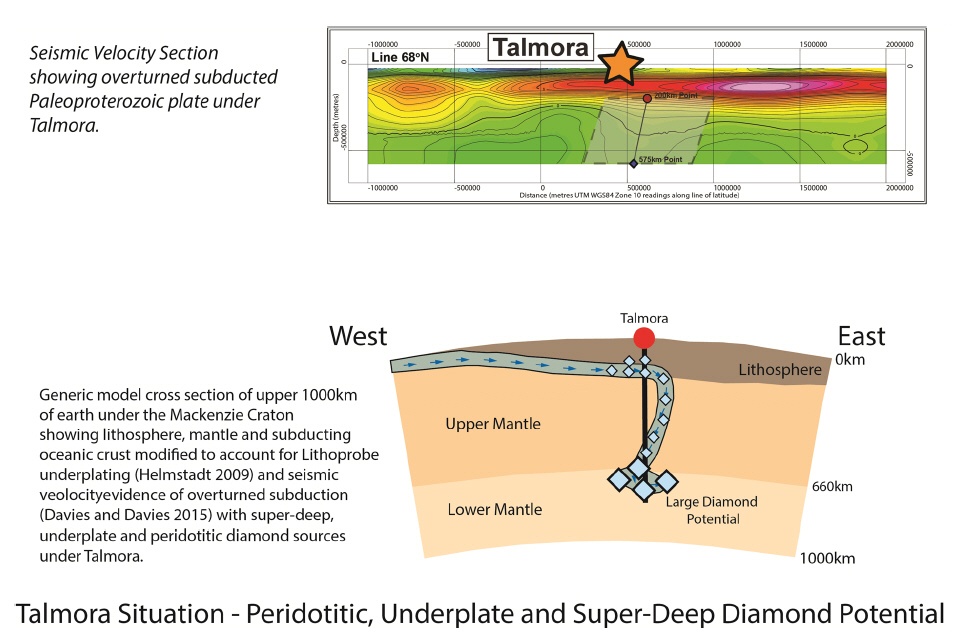| |
Horton River Project (to Fall 2017)
Regional Sampling programs across Lena West have recovered widespread KIMs with good diamond association chemistry including 18 diamonds. There is evidence from work done on the Bluefish River by others that many of the KIMs recovered in the western side of Lena West are derived from secondary concentrations at the base of the Cretaceous sediments with a likely primary source to the east, probably outside the basin along the diamond corridor. KIMs both within and outside the Cretaceous basin were redistributed by glaciation.
The regional KIMs across Lena West differ from those of the Darnley Bay kimberlites, but are similar to those of the Dharma kimberlites. The latter kimberlites are small and have a limited range of KIM compositions so cannot be the source of all the Lena West KIMs. Cluster analysis confirms that KIMs in the Horton area have compositions that cover the full range of those found across Lena West and they differ from those at Darnley Bay and Dharma.
Ferricrete ("Laterite") cobbles occur in tills in Talmora's project area especially down-ice of magnetic anomalies and appear to be of local origin. Together with diagenetic alteration of KIMs and apparent distruction of silicate KIMs they are evidence of a humid and tropical climate in the Talmora area that probably coincides with the Eocene Thermal Maximum (55Ma). A recent surficial map released by the GSC (2013) shows areas of regolith (ferricrete) within in the Talmora area. Glaciation on the flanks of the unglaciated Melville Hills has not completely removed the weathered zone.
Numerous magnetic targets on the Talmora property show characteristics of weathered kimberlite pipes. Over forty of them have associated KIMs down-ice (mostly chomite and ilmenite). The magnetic anomalies have relatively low amplitude and as expected in deeply weathered kimberlites, in which magnetite alters to hematite and iron-hydroxides show little evidence of remnant magnetism.
The tops of two targets were successfully investigated with a small Packsack drill. The holes penetrated through about 10 vertical metres of glacial overburden and ended 1 to 2 metres in compact rusty coloured clay.
A 25mm section of clay was recovered with a composition similar to weathered kimberlite from Sierra Leone. Drill cuttings from one hole contained thirteen chromites, one picroilmenite , and fourteen altered and five fresh Mn-ilmenites with diamond inclusion chemistry. Chromite compositions lie on a very narrow Fe/Mg crystalization trend line indicating a single population and nearby source.
Horton River Project Summary (to Fall 2017)
There is evidence that the Horton region could hold the source area of the Lena West KIMs and diamonds. Talmora had identified over 40 magnetic targets with associated KIM anomalies that are comparable in size to those found in the Lac de Gras region. A larger drill is required to test the targets with the objective of obtaining fresh kimberlite and sufficient core for microdiamond analysis.
Horton River Project (post Fall 2017)
The project potential changed significantly during the fall of 2017 when a "New" magnetic target (Seahorse) was recognised by the company during assessment file research. It is associated with anomalous KIM and ICP geochemical glacial train down-ice. The new anomaly is comparable in size with some of the largest known kimberlites.
It was recently recognised that the super‐deep mantle environment (~660km depth) is the source of the worlds biggest diamonds (such as the Koh‐I‐Noor, Cullinan, Hope, ..etc..). Mn-ilmentites with primary texture that were recovered in the Talmora packsack drill cuttings and those down-ice of the "New" target (Seahorse) have Super‐Deep diamond inclusion chemistry. Other KIMs indicate sources for diamonds within the cratonic lithosphere (periodotitic diamonds) and subducting oceanic lithosphere (eclogitic diamonds).
The seismic velocity response beneath the Horton River project area suggests that any kimberlites discovered on the property have the potential to contain diamonds from super‐deep, peridotitic and underplate sources.
Horton River Project Summary
The Horton project has targets ready for drilling. A field program estimated to cost between CAN$1,000,000 to 2,000,000 (1 to 2 months program with helicopter support) should confirm whether diamondiferous kimberlites are present on the Talmora property .
Talmora Diamond Inc. entered into an option agreement on July 6th 2018 with Olivut Resources Ltd. to carry out the drill testing of key targets.
| |
The above project outline was adapted from: (1) Davies, A,W. and Davies, R. (2016), Talmora Diamond Inc. - Horton River Project Update; in Irwin et al (compilers) 2016 44th Annual Yellowknife Geoscience Forum Abstracts, Northwest Territories Geological Survey, Yellowknife, NT, YKGSF Abstracts Volume 2016. and (2) Davies, A.W. (2018) Investor Presentation - Talmora Diamond Inc., 2018 Diamonds in Canada Symposium, June 11, 2018, Toronto, ON.
The original NI43-101 for the project can be found on www.sedar.ca.







